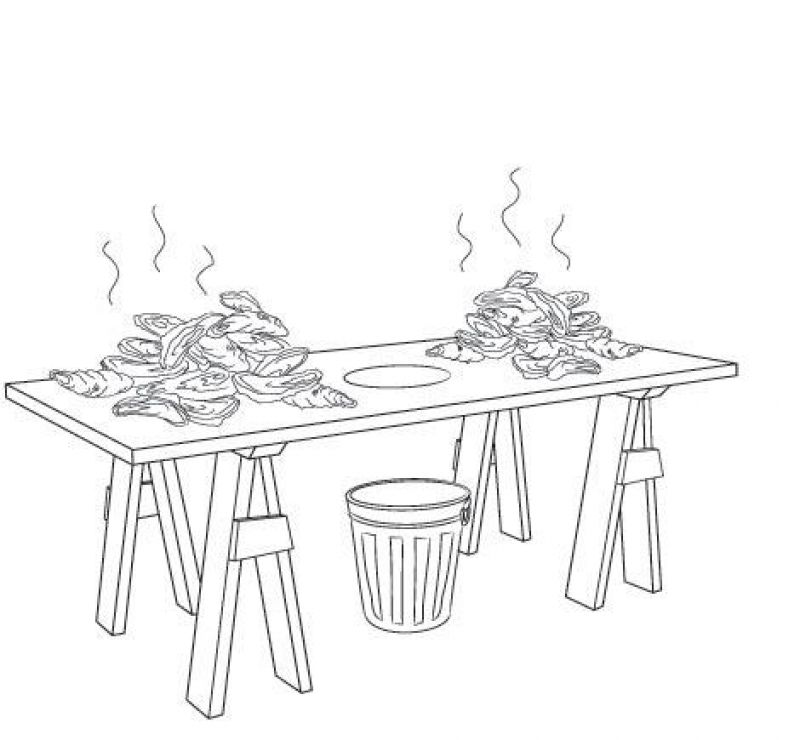
❶ Local oysters come as clusters and selects, the latter having more shell knocked off and having one, two, or three oysters on a cluster. A local bushel can be purchased in a 40-pound bag or box.
❷ Don’t ice your oysters. These bivalves are alive and will die with ice on them. Pick them up from your retailer (he recommends his family’s business Crosby’s) as close to your cooking time as possible, then keep them in a cool, dry place.
❸ Oysters are not for everyone and unless your guests are “Been Yas”, they would not count on eating enough to suffice as dinner. Think of them as an appetizer and have something hearty as your entrée. Crosby suggests a big pot of chicken bog, Brunswick stew, fish stew, gumbo, or pilau.
❹ Instead of an old piece of plywood for your oyster table, rent wood-trimmed, stainless steel-topped tables. Place each table on two saw horses, and it’ll be just the right height.
❺ When you set your oyster table, you must have a glove or a clean towel at each place along with an oyster knife. He suggests asking people to bring their own knives—it is part of locals’ DNA to have their own.
❼ Make your own your cocktail sauce. Then, buy small jars and label them to send home with guests. I like tons of Texas Pete, fresh horseradish, fresh lemon, ketchup, a tiny bit of celery salt, fresh ground pepper and Worcestershire.
❽ Décor is everything. For a sporty centerpiece, cut a football lengthwise and poke holes in it, then place flowers in the holes.
❾ Recycle your shells. The Department of Natural Resources can use old local shells to the environment replenish the oysterbeds so contact them before your roast.